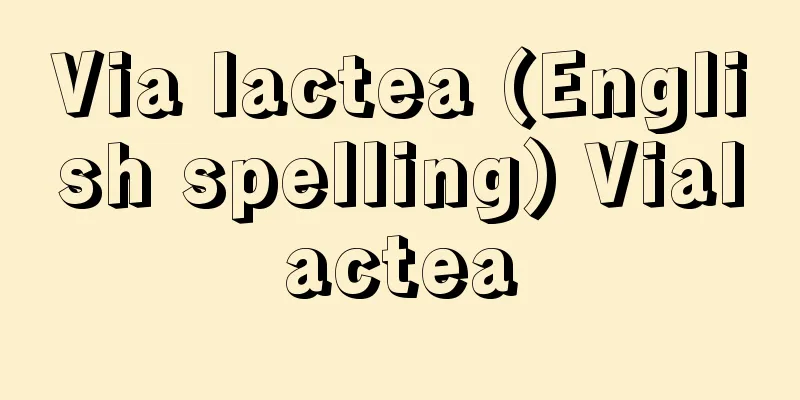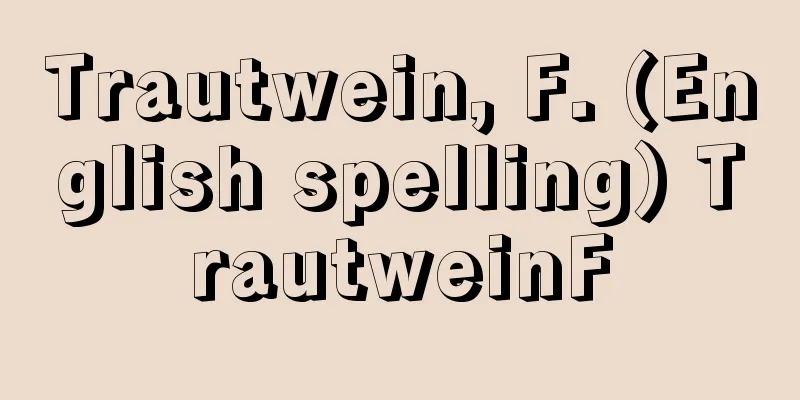Historical novels

|
Historical fiction is a composite concept of "history" and "fiction." Events (incidents) are continuous, yet unique and non-repeatable. In history, the world of the past is reconstructed while grasping the universal essence of history, such as relevance, necessity, and principles and laws as a moving body, through these events and fragments of records. In literature, in grasping the essence of history, while manipulating historical materials in the same way as in history, imagination is used to construct events and people within events (worlds) and eras that may have existed in the past. This is the historical novel. Today, the term also includes thematic novels that express contemporary themes by dressing them up in the costume of past times and historical materials. [Yamazaki Kazuaki] The nature of historical fictionE. Goncourt said, "History is the novel of the past, the novel is the history of what might have been" (Diary), and Lukacs, in his book "On Historical Literature," defines novels as "not a retelling of great historical events, but the recreation by artistic means of the images of those who participated in these events," and "a revival of the past as the prehistory of the present." Tsubouchi Shoyo was the first to define the basic characteristics of historical novels in Japan. In the section "Adaptation of Historical Novels" in "The Essence of Novels" (1885-86), Shoyo stated that the purpose of historical novels is to make up for "lack in official history" and "lack in history of customs," and argued that there should be no "discrepancies in dates," "mistakes in fact," or "misrepresentations of customs." Furthermore, in "On Historical Novels" (1895), he stated that the aim of historical novels is to clarify the atmosphere of the era and the personalities of the characters, and he called novels that use history as costumes "lyrical historical novels," claiming that they are unrelated to history. In response to this, Takayama Chogyu, who engaged in a "historical drama and historical painting debate" with Shoyo, countered that Shoyo's theory was "a theory that puts history primarily and art as the object," and that his interpretation of history was too restrictive. In contrast to Shoyo's objective approach, Chogyu's subjective approach, as a theory on the essence of historical fiction regarding historical veracity and artistic creativity, was a precursor to the method of historical fiction described by Mori Ogai in his 1915 work Rekishi sono soma to rekishi ni arare (Rekishi as it is and Rekishi ni arare). [Yamazaki Kazuaki] foreign countryThe historical novel is a literary style established in the 19th century, and is said to have originated with the British novelist W. Scott. Works such as Scott's Ivanhoe (1819) and Kenilworth Castle (1821), and Dumas the Elder's The Count of Monte Cristo (1844-45) are romances that ignore historical fact, even though they are set in history. Moving on to the next stage, there are works such as Lytton's Rienze (1835), Thackeray's The Virginians (1857-59), and Flaubert's Salammbô (1862), which aim to recreate history through philosophical discourse. Furthermore, historical novels which recreate history and dynamically describe human beings and their fates include L. Tolstoy's War and Peace (1863-69), Sienkiewicz's Quo Vadis (1896), A. K. Tolstoy's The Silver Duke (1863), A. N. Tolstoy's Peter the Great (1929-44), Sholokhov's Quiet the Don (1928-40), and Troyat's As Long as the World Lasts (1947-50). [Yamazaki Kazuaki] JapanIn Japan, historical novels are one genre of new literature in the Meiji period, and their seeds can be found in Yano Ryukei's "Seibu Meishi Keikoku Bidan" (1883-84) and Fujita Meikaku's "Saimin Igyoroku" (1887). Historical novels developed in tandem with the publication of historical treatises and biographical literature by Minyusha in the 1880s. Yamada Bimyo, Yazaki Saganoya, Koda Rohan, Miyazaki Sanmai, Murai Gensai, Watanabe Katei, and Murakami Namiroku were among those who wrote these works, but they were generally subjective and external historical romances. The person who perfected the "external, romantic, and objective" (Yanagita Izumi) historical novel was Tsukahara Shibukakien. His representative works include "The Battle of Yamazaki" (1894), "Yui Masayuki" (1897-98), "Kyoutabi" (1902), "Yodo-dono" (1905-06), and "Amakusa Ikki" (1906), the greatest achievement of the Meiji period. Other worthy works include Mitome's "Jiro Tsunetaka" (1908), "Taira Shigehira" (1910), Kosugi Tengai's "Izu no Yoritomo" (1912), Okura Toro's "Edo Castle" (1911-12), and "Mankoku Ronin" (1914). However, although these works delve into inner thoughts and interpretation of historical facts, they go beyond Ogai's works from the Taisho period in terms of their approach to historical narrative (historical sources) and historical consciousness. Taisho period historical novels are typified by Ogai and Akutagawa Ryunosuke. Ogai valued historical facts, analyzed the historical inevitability hidden in those facts, and objectively reproduced the past in a way known as "history as it is." He published "The Will of Okitsu Yagoemon" (1912), "The Abe Clan" (1913), and "The Revenge at Gojiingahara" (1913). Later, wanting to be free from the constraints of historical fact, he published "history-free" works such as "Sansho Dayu" (1915), "Takase-bune" (1916), and "Kanzan Jittoku" (1916). A wonderful fusion of these two lines is Shibue Chusai (1916), a biography of a scholar of early modern history who embodied the "form" supported by "self-cultivation" within the ethics of the Confucian community. Ryunosuke thoroughly pursued Ogai's "detachment from history," borrowing settings and subjects from the past and endowing them with contemporary themes, in his works Ogata Ryosai Memoirs, Chugi, and Kochiya (all published in 1917). Kikuchi Kan also published Tadanaokyo Gyojyo-ki (Record of the Life of Lord Tadanao) (1918). Both are conceptual historical novels with a strong subjective projection, and in the end, they were unable to surpass Ogai. Entering the Showa period, works that rival Ogai's "Shibue Chusai" include Shimazaki Toson's "Before Dawn" (1929-35), Honjo Mutsuo's "Ishikari River" (1938-39), Ema Osamu's "Mountain People" (1938-40), and Yasuoka Shotaro's "Ryuritan" (1976-81). All of these are "family histories" set in the turbulent period of the Meiji Restoration. They beautifully highlight the fate of people at the mercy of the waves of the times, while at the same time penetrating the essence of the Meiji Restoration. After World War II, notable works include Tamiya Torahiko's In the Fog (1947) and The Fall of the Castle (1949), Nakayama Yoshihide's Shoan (1963-64), Inoue Yasushi's The Roof Tiles of Tenpyo (1957), Osaragi Jiro's Paris Burning (1961-63), Usui Yoshimi's Azumino (1964-74), Shiba Ryotaro's Butterfly Dream (1976-79), and Ōoka Shōhei's The End of the Sakai Port Expulsion of Foreigners (1984-89). [Yamazaki Kazuaki] "Georg Lukacs, Theory of Historical Literature, translated by Yamamura Fusajiro (1938, Mikasa Shobo)" ▽ "Peter Gay, Theory of Historical Style, translated by Suzuki Toshiaki (1977, Minerva Shobo)" ▽ "Study of Historical Novels, Yanagita Izumi" (included in "Continued Essays on Meiji Literature", 1938, Shunjusha)" ▽ "Junichi Iwakami, Theory of Historical Literature (1942, Chuokoron-Shinsha)" ▽ "History and Literature, Kuwabara Takeo (1951, Shinchosha)" ▽ "Invitation to Historical Literature, edited by Sakakiyama Jun and Ozaki Hideki (1961, Nanboku-sha) " ▽ "Hideki Ozaki, Theory of Historical Literature (1976, Chikuma Shobo) " ▽ "Between History and Literature, Uemura Seiji (1977, Chuokoron-Shinsha)" ▽ "History and Literature" by Kikuchi Masanori (1979, Chikuma Shobo)" ▽ "Reader on Historical Literature" edited by Ozaki Hideki and Kikuchi Masanori (1980, Heibonsha)" ▽ "Historical Novels and Historical Dramas" by Tsugami Tadashi (1982, Shin Nihon Shuppansha)" ▽ "Collection of Essays on Meiji Historical Novels" by Sanpei Tatsuji (1987, Shintensha)" ▽ "On Historical Novels" by Tamiya Torahiko (included in Sagi, 1953, Wakosha)" ▽ "History and Novels" by Shiba Ryotaro (1969, Kawade Shobo Shinsha)" ▽ "Around Historical Novels" by Inoue Yasushi (1973, Kodansha)" ▽ "Problems with Historical Novels" by Ooka Shohei (1974, Bungeishunju) Source: Shogakukan Encyclopedia Nipponica About Encyclopedia Nipponica Information | Legend |
|
歴史小説とは、「歴史」と「小説」との複合概念である。できごと(事件)は一回性・非反復性をもちながら連続している。歴史学ではその事件や記録の断片を通して、関連性や必然性、運動体としての原則・法則といった普遍的な歴史の本質をとらえつつ、過去の世界を再構築する。文学では歴史の本質の把握にあたって、歴史学と同様の史料操作をしつつも、想像力を駆使し、事件や人物を過去のあったであろう事象(世界)や時代のなかに構成する。これが歴史小説である。また今日では、現代的主題を過去の時間や歴史的素材の衣装をまとって表現したテーマ小説まで含めてよんでいる。 [山崎一穎] 歴史小説の性格E・ゴンクールは、「歴史とは過去にあった小説であり、小説とは、ありえたかも知れぬ歴史である」(日記)といい、ルカーチは『歴史文学論』のなかで、「歴史的大事件の再述ではなく、これらの諸事件に参加した人々の姿の芸術的手段による再興で」あり、「現在の前史としての過去の復活である」と規定している。 わが国において歴史小説の基本的性格づけをしたのは、坪内逍遙(しょうよう)をもって嚆矢(こうし)とする。逍遙は『小説神髄』(1885~86)の「時代小説の脚色」において、歴史小説の目的は「正史の欠漏」と「風俗史の欠漏」を補綴(ほてい)することであると述べ、「年代の齟齬(そご)」「事実の錯誤」「風俗の謬写(びゅうしゃ)」はあってはならないと主張する。さらに、「歴史小説に就いて」(1895)で、時代の雰囲気や人物の性格を明確にすることであるといい、衣装(コスチューム)として歴史を利用した小説を「抒情(じょじょう)的歴史小説」と呼称し、歴史と無関係であると主張する。 これに対して、逍遙と「歴史劇・歴史画論争」を展開する高山樗牛(ちょぎゅう)は、逍遙説は「歴史を主として芸術を客とする説」で、あまりに歴史解釈が窮屈であると反論する。逍遙の客観本位に対して、樗牛の主観本位は、史的実証性と芸術的創造性をめぐる歴史小説の本質論として、森鴎外(おうがい)の『歴史其儘(そのまま)と歴史離れ』(1915)という歴史小説の方法の先蹤(せんしょう)となっている。 [山崎一穎] 外国歴史小説は19世紀に成立した文学形式で、イギリスの小説家W・スコットが祖といわれる。スコットの『アイバンホー』(1819)、『ケニルワースの城』(1821)、デュマ(父)の『モンテ・クリスト伯』(1844~45)などは、歴史を舞台にしながらも、史実無視によるロマンである。次の段階に進むと、哲学的談理による歴史の再現を目ざしたリットンの『リエンジ』(1835)、サッカレーの『バージニアンズ』(1857~59)、フロベールの『サランボー』(1862)がある。さらに、歴史を再現しながら、人間とその運命をダイナミックに叙述した歴史小説には、L・トルストイの『戦争と平和』(1863~69)、シェンキェビッチの『クオ・バディス』(1896)、A・K・トルストイの『白銀公爵』(1863)、A・N・トルストイの『ピョートル一世』(1929~44)、ショーロホフの『静かなドン』(1928~40)、トロワイヤの『この世の続く限り』(1947~50)がある。 [山崎一穎] 日本わが国の歴史小説は、明治新文学の一ジャンルであり、矢野龍渓(りゅうけい)『斉武名士経国美談』(1883~84)、藤田鳴鶴(めいかく)『済民偉業録』(1887)にその胚種(はいしゅ)をみる。歴史小説は明治20年代の民友社の史論や伝記文学の刊行と軌を一に発展する。山田美妙(びみょう)、矢崎嵯峨(さが)の屋、幸田露伴、宮崎三昧(さんまい)、村井弦斎(げんさい)、渡辺霞亭(かてい)、村上浪六(なみろく)らが筆をとったが、それらは概して主情的・外的な歴史ロマンであった。「外的、ロマンチック、客観的」(柳田泉(いずみ))歴史小説の大成者は塚原渋柿園(じゅうしえん)である。『山崎合戦』(1894)、『由井正雪』(1897~98)、『侠足袋(きゃんたび)』(1902)、『淀殿(よどどの)』(1905~06)、明治期最大の収穫である『天草一揆』(1906)が代表作である。さらに、美妙の『二郎経高(つねたか)』(1908)、『平重衡(しげひら)』(1910)、小杉天外(てんがい)の『伊豆の頼朝(よりとも)』(1912)、大倉桃郎(とうろう)の『江戸城』(1911~12)、『萬石(まんごく)浪人』(1914)など評価できる作である。しかし、これらの作は内面描写、史実の解釈に踏み込みかけているが、歴史叙述(史料)への接近の仕方、歴史意識の点で、大正期の鴎外の諸作をまたねばならない。 大正期の歴史小説は、鴎外と芥川龍之介(あくたがわりゅうのすけ)に代表される。鴎外は史実を重んじ、その史実に潜む歴史の必然性を分析し、過去を客観的に再現する「歴史其儘(そのまま)」とよばれる方法で『興津弥五右衛門(おきつやごうえもん)の遺書』(1912)、『阿部一族』(1913)、『護持院原(ごじいんがはら)の敵討(かたきうち)』(1913)を発表。やがて、史実の束縛から自由でありたいと『山椒大夫(さんしょうだゆう)』(1915)、『高瀬舟』(1916)、『寒山拾得(かんざんじっとく)』(1916)等の「歴史離れ」の諸作を発表。この二系列のみごとな融合が、儒学共同体の倫理のなかで「修養」に支えられた「型」を体現した近世考証学者の伝記『渋江抽斎(ちゅうさい)』(1916)である。龍之介は鴎外の「歴史離れ」を徹底させ、舞台と素材を過去に借り、現代的主題を付与するという方法で『尾形了斎(おがたりょうさい)覚え書』『忠義』『古千屋(こちや)』(いずれも1917)を発表。菊池寛も『忠直卿(ただなおきょう)行状記』(1918)を発表。いずれも主観の投影の濃厚な観念的歴史小説であり、ついに鴎外を超ええていない。 昭和期に入って、鴎外の『渋江抽斎』と拮抗(きっこう)する作として、島崎藤村の『夜明け前』(1929~35)、本庄陸男(ほんじょうむつお)の『石狩川』(1938~39)、江馬修(えまなかし)の『山の民』(1938~40)、安岡章太郎の『流離譚(りゅうりたん)』(1976~81)をあげる。いずれも維新の激動期の「ファミリー・ヒストリー」である。時代の波に翻弄(ほんろう)される人間の運命がみごとに浮き彫りにされ、同時に維新の本質を鋭くついている。第二次世界大戦後は、田宮虎彦(とらひこ)の『霧の中』(1947)、『落城』(1949)、中山義秀(ぎしゅう)『咲庵(しょうあん)』(1963~64)、井上靖(やすし)『天平(てんぴょう)の甍(いらか)』(1957)、大仏(おさらぎ)次郎『パリ燃ゆ』(1961~63)、臼井吉見(うすいよしみ)『安曇野(あずみの)』(1964~74)、司馬遼太郎(しばりょうたろう)『胡蝶(こちょう)の夢』(1976~79)、大岡昇平『堺港攘夷(さかいこうじょうい)始末』(1984~89)など注目すべき作が生まれている。 [山崎一穎] 『ゲオルグ・ルカーチ著、山村房次訳『歴史文学論』(1938・三笠書房)』▽『ピーター・ゲイ著、鈴木利章訳『歴史の文体』(1977・ミネルヴァ書房)』▽『柳田泉著「歴史小説研究」(『続随筆明治文学』所収・1938・春秋社)』▽『岩上順一著『歴史文学論』(1942・中央公論社)』▽『桑原武夫著『歴史と文学』(1951・新潮社)』▽『榊山潤・尾崎秀樹編『歴史文学への招待』(1961・南北社)』▽『尾崎秀樹著『歴史文学論』(1976・筑摩書房)』▽『植村清二著『歴史と文芸の間』(1977・中央公論社)』▽『菊地昌典著『歴史と文学』(1979・筑摩書房)』▽『尾崎秀樹・菊地昌典編『歴史文学読本』(1980・平凡社)』▽『津上忠著『歴史小説と歴史劇』(1982・新日本出版社)』▽『三瓶達司著『明治歴史小説論叢』(1987・新典社)』▽『田宮虎彦著『歴史小説について』(『鷺』所収・1953・和光社)』▽『司馬遼太郎著『歴史と小説』(1969・河出書房新社)』▽『井上靖著『歴史小説の周囲』(1973・講談社)』▽『大岡昇平著『歴史小説の問題』(1974・文芸春秋)』 出典 小学館 日本大百科全書(ニッポニカ)日本大百科全書(ニッポニカ)について 情報 | 凡例 |
>>: Historicism - Historismus (German)
Recommend
First fruits of the year - Ohatsuhomono
...The term was used to refer to a portion of the...
Biwa trout (Biwa trout) - Biwa trout (English spelling)
A freshwater fish of the Salmonidae family. Biwa t...
Great Britain - Great Britain
A British merchant ship that was the first ocean-g...
Gajumaru (banyan tree) - Gajumaru
...It is found in the southern subtropical zone a...
Trabzon - Trabzon (English spelling)
A port city on the Black Sea in the northeastern ...
Junjiro Shimazono - Junjiro Shimazono
Internal medicine scientist. An authority on beri...
"Enyuin's Precept Diary" - Enyuin's Precept Diary
...From the mid-Heian period onwards, the number ...
Equisetum ramosissimum (English notation) Equisetum ramosissimum
…[Masahiro Kato]. . . *Some of the terminology th...
《De civitate Dei》(English spelling)DecivitateDei
…One of Augustine's masterpieces, a large wor...
"Canada Newspaper" - Kanada Newspaper
...This became the "Kanada (Canada) Shinpo&q...
Mount Jonendake
A mountain that stands tall on the west side of t...
"Song of the Echigo Lion"
Her first film appearance was in March 1949 for T...
Hosta sieboldiana (English spelling)
… [Noboru Fujita]. … *Some of the terminology tha...
Rizq (English spelling)
An Arabic word meaning food (plural al-zaq). In th...
Ministry of Education
...The center of educational administration in ea...









